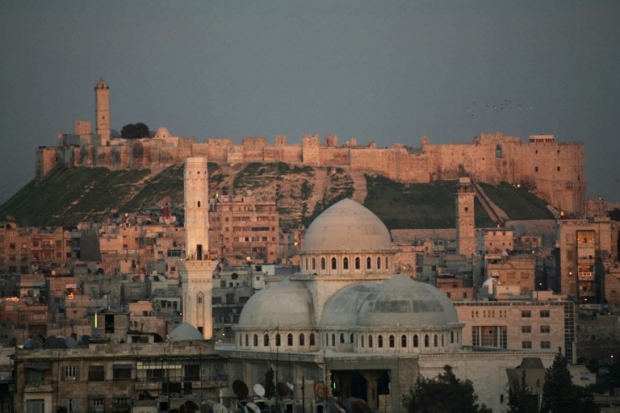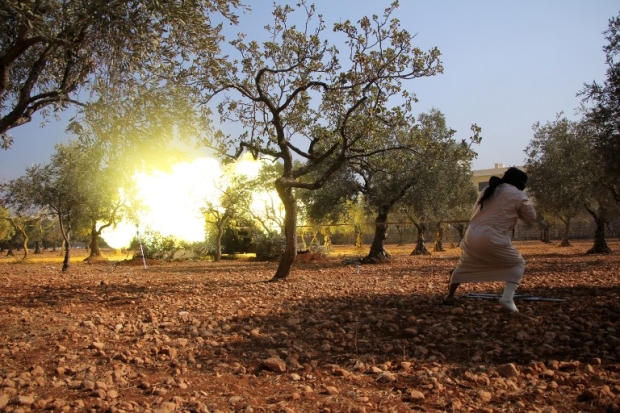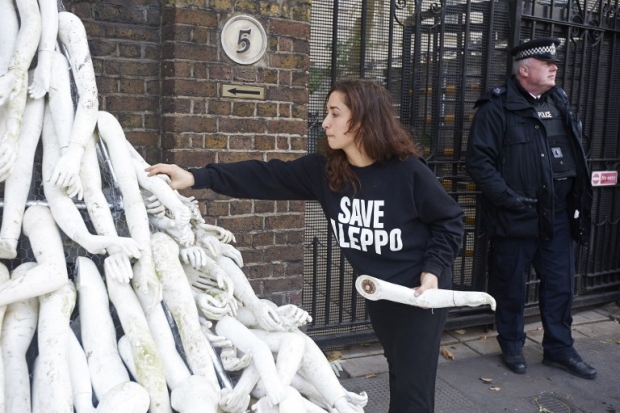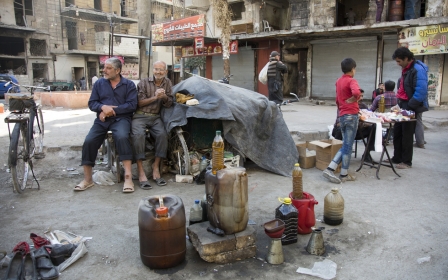‘We are watching’: Russia’s fight to take Aleppo for good is about to begin
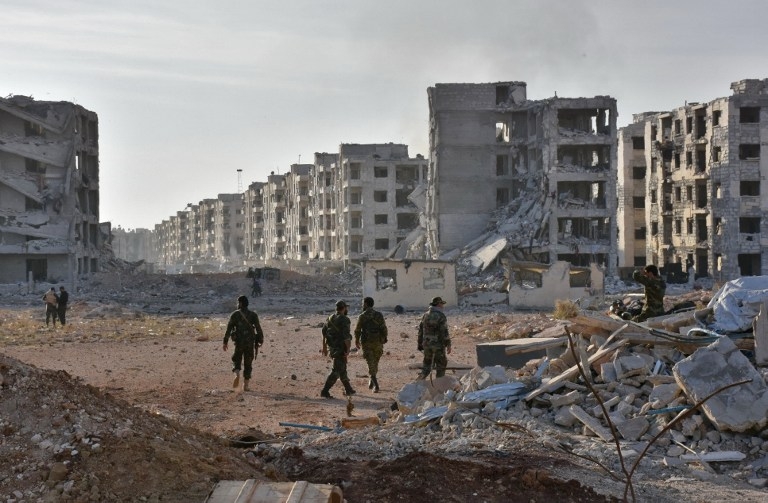
Russia's recent ceasefire in Aleppo aims to minimise the international attention and pressure caused by its attack on the rebel-held besieged eastern parts of the city.
But there are also very practical reasons behind the temporary suspension of its air strikes – namely that Moscow is currently focused on intensifying its fight elsewhere with the aim of a quick victory in the northern city.
It is important to say loud and clear that we are and will continue to watch the actions of the Russian and Syrian regimes
While the bombardment of eastern Aleppo has stopped for now, Russia is attacking rebel supply lines, reinforcements and military bases in rural Aleppo and on the outskirts of western Aleppo to hinder any counter-attack to break the city’s siege.
In recent days, pro-regime forces have largely succeeded in stopping the current rebel offensive, making it easier for Russia to resume its air campaign on eastern Aleppo and finish the fight, once and for all.
Multiple reports confirm that Russia aims to benefit from the arrival of new reinforcements to Syria and also from the distraction of the US presidential elections to launch this new – and potentially decisive - offensive on eastern Aleppo imminently.
Halt here, hit there
Aleppo, the largest city in Syria, was the country’s former economic powerhouse. Its countryside is a rebel stronghold and hosts one of the main supply lines from Turkey.
The city has been divided into government and rebel zones - west and east, respectively - since mid-2012, shortly after the fighting began there. The tit-for-tat ground battle between the two sides changed in late September when pro-Assad forces - with heavy Russian air support - launched an offensive to retake the city.
Russia’s air strikes have killed and wounded hundreds, flattened buildings, and laid waste to Aleppo’s already crippled medical sector. Between 250,000 and 300,000 citizens have been under siege, without access to food, medical aid, or humanitarian assistance for several months. The siege has led to a rapid rise in food prices.
As a result, Western countries started calling out Moscow and Damascus for committing potential war crimes and demanding the cessation of their joint offensive on the eastern part of the city.
'It is important to know that Russia did not terminate all its air strikes. In fact, they used this ceasefire to increase their air strikes on other parts of Aleppo and Idlib provinces'
-Mustafa Hassan, resident in besieged Aleppo
Russia responded by introducing a ceasefire in eastern Aleppo in October for humanitarian purposes. However, locals in Aleppo believe that Russia aims to reduce international pressure by offering a brief ceasefire, while it continues working on capturing the rest of the city.
“It is true that the Russia’s air strikes on our besieged areas have largely stopped, but the shelling by pro-regime forces continued,” said Mustafa Hassan, a local resident of the besieged Shaar district of Aleppo, via WhatsApp on Wednesday.
“It is also important to know that Russia did not terminate all its air strikes. In fact, they used this ceasefire to increase their air strikes on other parts of Aleppo and Idlib provinces.”
Just tactics
Despite Russia’s attempts to present itself as a responsible actor who cares about civilian casualties and is willing to work with the international community, its surprise announcement to continue the temporary suspension of its air strikes on besieged Aleppo was purely practical.
Russia’s ceasefire in the eastern districts of Aleppo that began on 20 October has allowed Moscow to target the rebel groups in Aleppo and Idlib provinces and hinder their abilities to break the eastern Aleppo siege.
But even as the ceasefire continued, Russia and the Syrian regime continued to use starvation as a weapon, blocking aid deliveries and forcing people in eastern Aleppo to surrender. Starvation has been Assad’s best weapon as it is cheap and efficient.
Looming catastrophe
Now Russia, according to multiple reports and local sources, is about to embark on a new strategy to seize the rest of the city.
On 7 November, the Kremlin announced on that Russia's air force would maintain a suspension on strikes in Aleppo, unless militants launched an offensive.
'A wide scale attack on Aleppo is soon going to begin, deployment of ground forces to front posts in addition to planes now circling above the besieged parts of the city'
-Rami Jarrah, Syrian journalist
However, a day later, the Interfax News Agency cited a source in the Russian defence ministry stating that Russia was preparing to resume air strikes around Aleppo imminently.
Russia's Admiral Kuznetsov aircraft carrier, its Pyotr Veliky nuclear-powered, guided missile cruiser and two destroyers docked in Russia's naval facility in Tartous and are expected to start participating in the attack on Aleppo soon.
In recent days, rebels adopted street fighting tactics, choosing districts with multi-storey buildings as battlefields to reduce the impact of the hostile air force and artillery.
Pro-regime forces, largely supported by Iran-sponsored militias, nonetheless largely succeeded in stopping them. Now Russia, supported by pro-regime ground forces, will likely use this moment to resume its bombarding campaign.
Sources on the ground also reported preparations for an imminent attack on Aleppo which lends credence to these reports.
“A wide scale attack on Aleppo is soon going to begin, deployment of ground forces to front posts in addition to planes now circling above the besieged parts of the city,” Rami Jarrah, a prominent Syrian journalist, wrote on his Facebook page on Wednesday.
It is, therefore, our responsibility to continue pushing for the protection of those civilians, as well as others in the rest of Syria. International public pressure has succeeded in forcing Russia to reduce its air strikes on eastern Aleppo, despite any tactical benefits it has reaped.
Therefore, it is important to say loud and clear that we, and the world, are and will continue to watch the actions of the Russian and Syrian regimes in Syria.
- Haid Haid is a Syrian columnist and researcher and a Chatham House Associate Fellow. Focus: Security policy, conflict resolution, Kurds and Islamist movements. He tweets @HaidHaid22.
The views expressed in this article belong to the author and do not necessarily reflect the editorial policy of Middle East Eye.
Photo: A member of the Syrian pro-government forces stands amid heavily damaged buildings in Aleppo's 1070 district on 8 November 2016, after troops seized it from rebel fighters (AFP)
New MEE newsletter: Jerusalem Dispatch
Sign up to get the latest insights and analysis on Israel-Palestine, alongside Turkey Unpacked and other MEE newsletters
Middle East Eye delivers independent and unrivalled coverage and analysis of the Middle East, North Africa and beyond. To learn more about republishing this content and the associated fees, please fill out this form. More about MEE can be found here.



